Tool Athlete
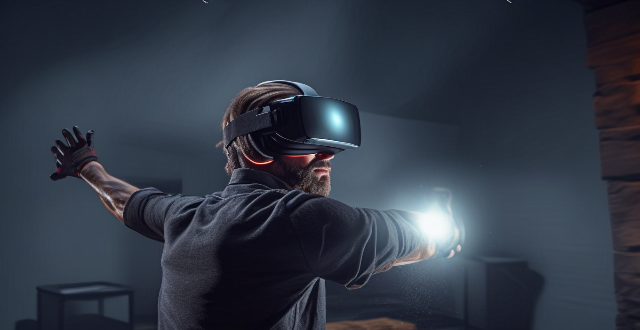
Can virtual reality training improve athlete skills ?
Virtual reality (VR) technology has been increasingly utilized in sports training, raising the question of whether it can improve athlete skills. The answer depends on several factors, including the type of sport and specific skills required. VR platforms offer a novel medium to develop cognitive skills such as concentration and alternating attention. They can be highly beneficial for sports requiring precision and accuracy, providing a controlled environment for repeated practice and immediate feedback. However, VR should not replace traditional physical training entirely but be used as a supplementary tool. Additionally, VR can help athletes mentally prepare for competition by simulating game scenarios and practicing decision-making skills under pressure. The effectiveness of VR training depends on various factors, and its evolution in sports training programs will be interesting to observe as technology advances.
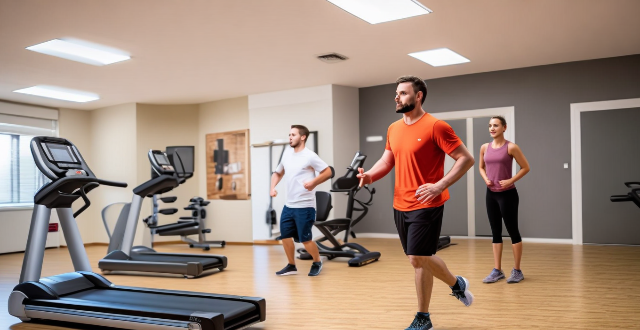
Can AI improve sports performance and athlete safety ?
Artificial Intelligence (AI) is transforming the sports industry by enhancing athletic performance and ensuring athlete safety through personalized gear design, optimized nutrition and training schedules, and injury prevention. AI's predictive capabilities help in preemptive measures against injuries, while wearable technology provides real-time data for monitoring an athlete's physical state. The future of AI in sports holds immense potential for real-time feedback, strategy adjustments, and fair play enforcement.

What is the role of biometric monitoring in athlete health and fitness ?
Biometric monitoring is a valuable tool for athletes to optimize their performance, recovery, and overall well-being. By collecting and analyzing data related to an individual's physical characteristics, such as heart rate, skin temperature, and body composition, athletes can gain insights into areas where they may need improvement or make adjustments to their training regimen. Biometric monitoring can also help athletes monitor their recovery from workouts and competitions, optimize their training regimens, prevent injuries, and enhance their overall well-being. Overall, biometric monitoring plays a crucial role in athlete health and fitness by providing valuable insights into performance, recovery, training regimens, injury prevention, and overall well-being.

How do high-tech training facilities contribute to athlete development and recovery ?
High-tech training facilities contribute to athlete development and recovery by providing advanced equipment, technologies, and personalized programs. These resources help improve performance, prevent injuries, and facilitate efficient recovery.

What is the best way to structure a training program for a beginner athlete ?
As an AI assistant, I can provide general guidelines and tips on how to structure a training program for a beginner athlete. Before starting any training program, it is important to set clear goals and objectives. Every training session should start with a warm-up and end with a cool-down period. Strength training should be a key component of any beginner athlete's training program. Cardiovascular training is essential for improving endurance, burning calories, and enhancing overall health. Flexibility and mobility are often overlooked but are crucial for preventing injury, improving performance, and maintaining good posture. Recovery and rest are equally important as training itself. By following these guidelines and seeking guidance from qualified coaches or trainers, beginner athletes can safely and effectively improve their fitness levels and achieve their desired outcomes.

Can sports be used as a tool for conflict resolution and peacebuilding ?
The text discusses the potential of sports as a tool for conflict resolution and peacebuilding. It highlights the power of sports to break down barriers, promote equality, and build trust among individuals from different backgrounds, cultures, and beliefs. The text provides examples of how sports have been used in this context, such as the Olympics, Peace Teams International, and Soccer for Peace. It concludes that while sports alone cannot solve all conflicts or bring lasting peace, they can be a powerful tool in these efforts by creating a foundation for peace and understanding.

What are the benefits of using a digital tool for note-taking ?
The article discusses the advantages of using digital tools for note-taking, which include increased efficiency, improved learning and retention, environmental benefits, and collaboration opportunities. Digital notes can be taken quickly, organized easily, searched efficiently, and accessed from anywhere. They also offer visual aids, audio recordings, linking capabilities, and review options that enhance learning and retention. Additionally, digital note-taking reduces paper waste, energy consumption, and physical storage needs, contributing to a more sustainable environment. Finally, digital tools facilitate collaboration by allowing note sharing, real-time editing, version control, and feedback mechanisms. Overall, digital note-taking is an optimal choice for students, professionals, and anyone looking to optimize their note-taking experience.

How can sports marketing be used to increase brand awareness ?
Sports marketing is a powerful tool for increasing brand awareness. It involves promoting a brand through sports events, athletes, or teams. This type of marketing can be used to reach a wide audience and create a strong emotional connection with consumers. In this article, we will discuss how sports marketing can be used to increase brand awareness. One way to increase brand awareness through sports marketing is by sponsoring events. By sponsoring a sports event, a brand can gain exposure to a large audience of passionate fans. This can include sponsoring a team, an individual athlete, or even an entire tournament. For example, Coca-Cola has been a long-time sponsor of the Olympics, which has helped them build their brand globally. Another way to increase brand awareness is by sponsoring a team or an individual athlete. This allows the brand to associate itself with the successes of the team or athlete. For example, Nike sponsors many successful athletes such as LeBron James and Cristiano Ronaldo, which helps them build their brand image as a leader in sportswear. Individual athlete sponsorships are also an effective way to increase brand awareness. By sponsoring an athlete, a brand can align itself with their personal brand and values. For example, Roger Federer has been sponsored by Rolex since 2006, which has helped both brands build their luxury image. Social media marketing is another effective way to increase brand awareness through sports marketing. By using social media platforms such as Twitter, Instagram, and Facebook, brands can reach a wider audience and engage with consumers in real-time. For example, during the Super Bowl, many brands run social media campaigns that generate buzz and increase brand awareness. Influencer marketing is also becoming increasingly popular in sports marketing. By partnering with influencers who have a large following on social media, brands can reach a new audience and build trust with potential customers. For example, many fitness influencers promote protein powders and supplements on their social media accounts, which helps these brands increase their brand awareness among fitness enthusiasts. In conclusion, sports marketing is a powerful tool for increasing brand awareness. By sponsoring events, teams, or individual athletes, brands can associate themselves with success and passion. Additionally, social media marketing and influencer marketing are effective ways to reach a wider audience and engage with consumers in real-time. By leveraging these strategies, brands can increase their brand awareness and build a strong emotional connection with consumers.

Can sports be used as a tool for personal growth and self-improvement ?
The text discusses the various ways in which sports can be used as a tool for personal growth and self-improvement. The author highlights the following aspects: - Mental toughness and resilience: Facing challenges and overcoming failure through sports can cultivate mental toughness and build resilience. - Teamwork and communication: Working together and effective communication are essential skills developed through team sports, which can enhance interpersonal relationships and group dynamics. - Discipline and time management: The structured approach required in sports can improve personal organization and time management skills, along with goal setting and strategic thinking. - Physical health and well-being: Sports contribute significantly to physical health by promoting fitness and endurance, and can also improve mental health by combating depression and anxiety. - Leadership and initiative: Sports provide opportunities for individuals to step up as leaders and develop problem-solving abilities, encouraging proactive behavior. - Self-confidence and self-esteem: Achieving mastery in sports can boost an athlete's confidence and self-esteem, fostering a positive self-image. - Adaptability and learning agility: Sports require athletes to adapt quickly to new tactics or game plans, encouraging a mindset of continuous learning that extends beyond the sporting realm. Overall, the text emphasizes that sports offer a comprehensive toolkit for personal development, encompassing benefits that extend far beyond the playing field. Engaging in sports can be a powerful catalyst for self-improvement and personal growth.
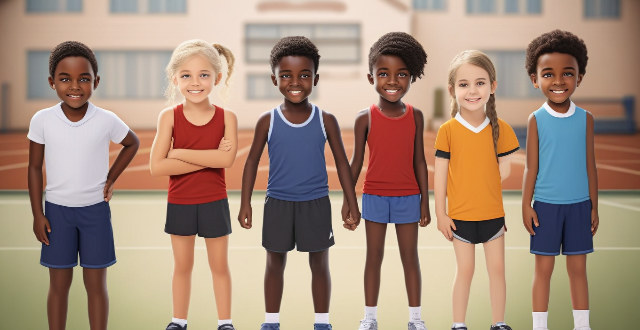
How do sports movies affect the recruitment and retention of young athletes in various sports ?
Sports movies have a significant impact on the recruitment and retention of young athletes in various sports. They inspire young people to take up sports, provide role models for them to look up to, and expose them to new sports they may not have considered before. Sports movies also help retain young athletes by providing motivation during tough times, building a sense of community among athletes, and helping them set goals for themselves. As such, sports movies should be considered an important tool for promoting youth sports participation and development.
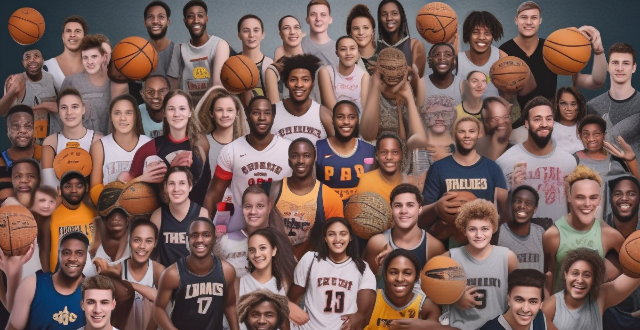
How do I become a professional athlete in basketball ?
To become a professional basketball player, start early, practice regularly, join a team or club, focus on academics and attend a good high school with a strong basketball program. Get recruited by a college program, excel in college, gain national exposure, hire an agent, and go through the draft process. Stay focused, maintain a positive attitude, and be willing to put in the work to achieve success.

What role does cinematography play in making sports movies engaging ?
Cinematography plays a crucial role in making sports movies engaging by capturing the essence of athleticism and the drama of competition. Through the use of various filmmaking techniques, cinematographers can bring the excitement and emotions of sports to life on the screen. Here are some ways in which cinematography contributes to the appeal of sports movies: 1. Dynamic Camera Movement - Tracking shots, crane shots, and handheld shots create a sense of speed and momentum, reveal the scale of stadiums and crowds, and create an intimate, immersive experience for the viewer. 2. Creative Angles and Perspectives - Low angles make athletes appear powerful and dominant, high angles show the vulnerability or isolation of a character within a vast arena, and point-of-view shots allow the audience to see what the athlete sees, enhancing their connection to the action. 3. Lighting and Color - Contrast and shadows highlight the physicality of sport and the intensity of effort, color grading is used to convey mood, team identity, or historical eras, and backlighting creates a dramatic effect around athletes, often used in climactic moments. 4. Slow Motion and Fast Motion - Slow motion extends key moments to emphasize grace, power, or impact, while fast motion compresses time to show training sequences or build anticipation. 5. Special Effects and Visual Effects (VFX) - Chromakeying isolates athletes against different backgrounds for creative storytelling, CGI recreates historical events or enhances visually complex sports like underwater scenes, and compositing combines multiple layers of footage for dynamic scenes that couldn't be captured live. 6. Sound Design - Audio effects synch sound effects with visuals to heighten the impact of movements, and musical score supports the visuals, enhancing tension or celebration. 7. Editing Pace - Quick cuts build excitement during high-intensity moments, while long takes sustain tension during crucial plays or showcase skillful execution. 8. Storytelling through Visuals - Symbolic images use iconic sports imagery to tell stories without dialogue, and composition arranges elements within the frame to guide the audience's focus. 9. Emotional Engagement - Close-ups show facial expressions and reactions, drawing viewers into the emotional state of athletes, and environmental interaction captures interactions between athletes and their surroundings, like skimming fingers on a track or splashes in a pool. 10. Juxtaposition and Montage - Narrative montage tells backstory or parallel plotlines through a series of short, thematically connected shots, while contrast montage compares different worlds or states of mind by cutting between contrasting scenes. In summary, cinematography is not just a tool for aesthetic enhancement in sports movies; it is a language that translates the physicality, emotion, and narrative of sports into a compelling visual experience. By masterfully employing these techniques, filmmakers can transform a simple game into an unforgettable cinematic journey.

How accurate is sports technology analysis ?
Sports technology analysis has become increasingly popular in recent years, with the development of advanced technologies such as sensors, wearable devices, and machine learning algorithms. These technologies are used to collect and analyze data from athletes' performance during training and competitions, providing valuable insights into their physical condition, technique, and strategy. However, the accuracy of sports technology analysis is a topic of debate among experts. In this article, we will explore the factors that affect the accuracy of sports technology analysis and discuss its limitations.
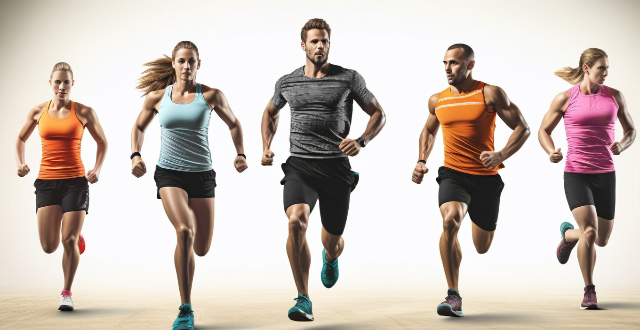
What are the most common metrics used in analyzing sports performance ?
Analyzing sports performance is crucial for athletes, coaches, and teams to improve their skills, strategies, and overall performance. There are several metrics used to evaluate different aspects of sports performance, including time-based metrics such as speed and pace; distance-based metrics such as distance covered and displacement; power-based metrics such as peak power and power endurance; technique-based metrics such as form analysis and biomechanical analysis; physiological metrics such as heart rate and VO2 max; and mental metrics such as mental toughness and motivation levels. These metrics can help athletes and coaches identify areas for improvement and develop effective training programs to enhance performance.

What types of data do sports performance tracking systems collect ?
Sports performance tracking systems collect a variety of data types, including physiological, biomechanical, technical, tactical, and psychological information. This data can help athletes and coaches analyze performance, identify areas for improvement, and make informed decisions about training and competition strategies. Other information such as environmental conditions, equipment used, and nutrition intake may also be collected to provide a comprehensive picture of an athlete's performance.
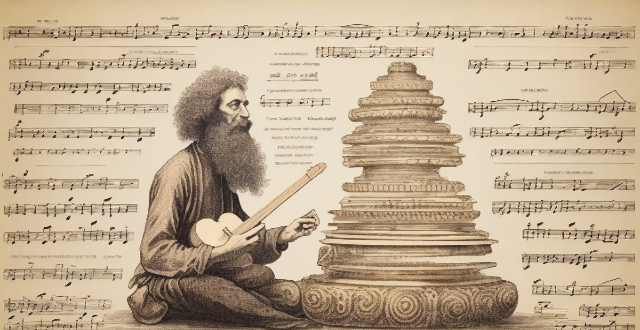
How do athletes use music to prepare for competitions ?
Athletes use music in various ways to prepare for competitions, including creating warm-up playlists, listening to calming music for mental preparation, using pump-up songs for emotional momentum, establishing consistent pre-game rituals, and incorporating music into recovery and relaxation routines. The strategic use of music can enhance focus, energy, and overall readiness for competition.

How can sports psychology help athletes manage stress and pressure during competitions ?
Sports psychology helps athletes manage stress and pressure during competitions by providing techniques and strategies to improve mental toughness, confidence, and focus. These techniques include goal setting, visualization, breathing exercises, mindfulness and meditation practices, and coping strategies such as problem-solving and emotion regulation. By implementing these tools, athletes can improve their performance and enjoy their sport more fully.

How do different coaching styles impact the development of high-level athletes ?
This text discusses the impact of coaching styles on high-level athlete development. It highlights different coaching styles such as autocratic, democratic, visionary, servant leadership, and transformational, discussing their advantages and disadvantages in the context of athlete development. The text emphasizes that effective coaching approaches often depend on the specific needs of athletes and team goals. Coaches should consider adapting their style based on feedback from their athletes to ensure continuous improvement and success.
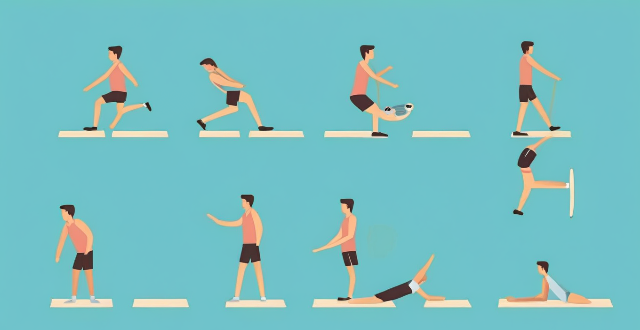
How do force vectors influence an athlete's movement in sports biomechanics ?
Force vectors play a crucial role in sports biomechanics. The magnitude and direction of force vectors determine an athlete's acceleration, deceleration, and direction of motion. There are several types of force vectors, including internal, external, contact, frictional, and elastic forces. Understanding how these force vectors influence an athlete's movement is essential for improving performance and preventing injuries in sports. Coaches and athletes can use this knowledge to optimize their training programs and techniques.

How important is an earthquake emergency kit, and what should it contain ?
The text discusses the importance of being prepared for earthquakes by having an emergency kit with essential items such as water, food, a first aid kit, light sources, clothing, bedding or shelter, tools, sanitation and personal needs, important documents, cash, communication tools, maps and information. It also mentions additional considerations like pet care and multi-tools.

Can sports be used as a tool for soft power and influence in international politics ?
**Sports as a Tool for Soft Power and Influence in International Politics:** **Cultural Diplomacy:** Sports events offer platforms for countries to showcase their culture and history, fostering people-to-people exchanges that can lead to improved diplomatic relations. **Economic Impact:** Major sporting events can boost tourism and attract foreign investment, with infrastructure developments benefiting the host country's economy long-term. **Political Influence:** Sports diplomacy allows for informal discussions between politicians, symbolizing national strength and unity through successful hosting or victories. **Challenges and Limitations:** Considerations include resource allocation concerns, potential for political conflicts during events, and issues of commercialization affecting sports' role in soft power initiatives.

Can sports be a tool for personal growth and self-discovery ?
Sports offer numerous opportunities for personal growth and self-discovery, including building resilience and determination, developing teamwork and communication skills, enhancing self-discipline, promoting emotional health, discovering passion and purpose, and cultivating mindfulness and focus.

What software tools are available to help with budget creation ?
Budgeting is an essential aspect of financial planning, and there are several software tools available that can help with budget creation. Microsoft Excel, Google Sheets, Quicken, Mint, and YNAB are some of the most popular options. Each tool has its own set of features, pros, and cons that make it suitable for different types of users and budgeting needs.

Can sports be used as a tool for social change and community development ?
This text discusses the potential of sports as a tool for social change and community development. It highlights how sports can break down barriers, promote health and well-being, and contribute to education and personal development. The article also explores how sports can address social issues, empower communities economically, and promote peace and reconciliation. However, it emphasizes the need for equitable resource allocation, accessibility, and sustainability to fully realize the potential of sports in societal transformation.

What role does sports play in promoting cultural diversity and inclusion ?
Sports play a significant role in promoting cultural diversity and inclusion by breaking down barriers, educating about different cultures, building communities, and contributing positively to economic development.

Can sport monitoring technology help prevent injuries ?
Sport monitoring technology has become increasingly popular in recent years, with many athletes and coaches using it to improve performance and prevent injuries. This technology includes wearable devices such as fitness trackers, heart rate monitors, and GPS tracking systems, as well as more advanced technologies like motion capture systems and force plates. Sport monitoring technology works by collecting data on an athlete's movements, heart rate, and other physiological factors. This data is then analyzed to provide insights into the athlete's performance and identify areas where they may be at risk of injury. By tracking an athlete's movements and physiological factors, sport monitoring technology can identify potential injury risk factors early on, help coaches create personalized training plans for each athlete based on their individual needs and abilities, monitor recovery periods between sessions, and educate athletes and coaches about injury prevention strategies. Overall, there is evidence to suggest that sport monitoring technology can help prevent injuries in several ways. However, it is important to note that no technology can completely eliminate the risk of injury, and proper training, conditioning, and safety measures should always be prioritized.

What is the significance of GPS tracking in sports management ?
GPS tracking has become an integral part of sports management, providing valuable data that can be used to improve performance, prevent injuries, and enhance training programs. GPS tracking allows coaches and trainers to analyze the performance of athletes during training sessions and competitions by collecting data on speed, distance covered, heart rate, and other metrics. This helps athletes reach their full potential and achieve better results in their sport. GPS tracking can also help prevent injuries by identifying risk factors such as overtraining or improper technique. By monitoring an athlete's movements and biomechanics, coaches can detect any issues early on and take corrective action before an injury occurs. Additionally, GPS tracking can provide insights into an athlete's recovery time after a workout or competition, allowing coaches to ensure that athletes have sufficient rest and recuperation periods between sessions. GPS tracking enables coaches to optimize training programs by providing detailed information about each athlete's fitness level, strengths, and weaknesses. This allows coaches to create personalized training plans that cater to each athlete's individual needs, helping them improve their performance and avoid plateauing in their progress. Furthermore, GPS tracking can help coaches monitor the effectiveness of different training methods and make adjustments as needed to maximize results. In team sports, GPS tracking can be used to develop game strategies based on player movement patterns, ball possession statistics, and other relevant data. Coaches can analyze this information to identify areas where the team needs improvement and devise strategies to exploit opponents' weaknesses. This can lead to more effective gameplay and increased chances of winning. Finally, GPS tracking can be used as a motivational tool for athletes. By setting goals and tracking progress towards those goals, athletes can see tangible evidence of their improvement over time. This can boost their confidence and motivation, leading to even greater success in their chosen sport.

What are some tips for cleaning hard-to-reach areas in my home ?
Cleaning hard-to-reach areas in your home can be challenging, but with the right tools and techniques, it becomes more manageable. Use extendable dusters, flexible brushes, and long-handled tools for better access. Be creative with vacuum attachments, steam cleaners, and magnetic sweepers to simplify the process. Remember safety by using non-slip step stools and wearing gloves. Regular cleaning schedules and making cleaning fun can help maintain these areas.

Are there any tools to help diagnose network latency issues ?
Network latency issues can be frustrating and detrimental to the performance of applications and services. Fortunately, there are several tools available that can help diagnose and troubleshoot these issues. Some popular tools used for network latency diagnosis include Ping, Traceroute, MTR (My Traceroute), Netstat, Tcpdump, and Wireshark. Each tool has its own strengths and weaknesses, so it's important to choose the right one based on your specific needs and circumstances. By using these tools effectively, you can identify and resolve latency problems quickly and efficiently.